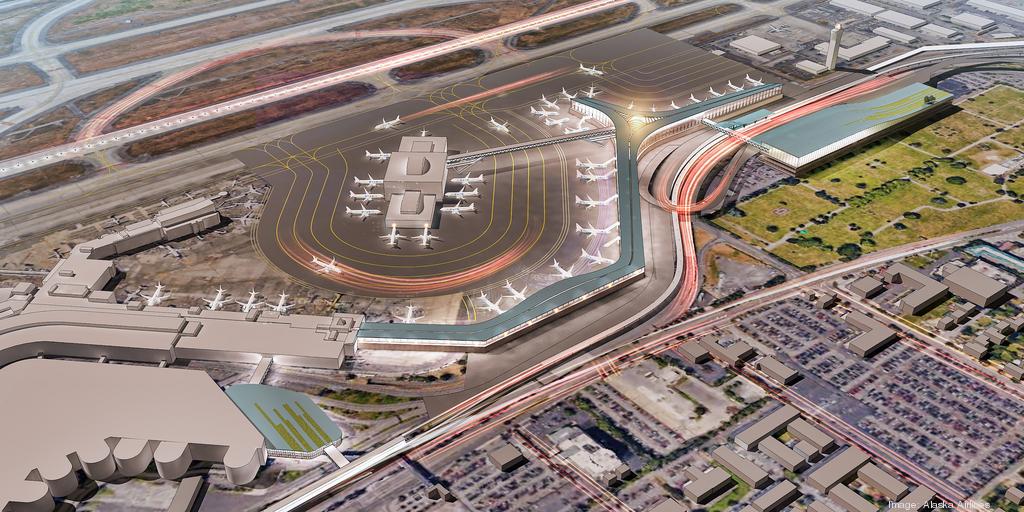
By Andrew McIntosh – Reporter, Puget Sound Business Journal
Nov 21, 2019
Seattle-Tacoma International Airport’s $2.3 billion plan to build a standalone North Terminal to manage passenger growth has “critical shortcomings,” Alaska Airlines says.
In letters to Sea-Tac Airport leaders and interviews with the Business Journal, Alaska says the facility’s plan for a 19-gate terminal would frustrate travelers and transform Sea-Tac into one of the most congested hubs in the United States.
The terminal is described in Sea-Tac Airport’s revised Sustainable Airport Master Plan, which initially proposed a 35-gate terminal facility in 2016. The Port of Seattle owns and operates the airport.
Shane Jones, Alaska’s vice president of airport real estate and development, and Matthew Shelby, the airline’s managing director of real estate, said users of the facility would be “completely disconnected” from the rest of Sea-Tac’s core domestic and international flight operations.
“This isolated terminal would require passengers moving between terminals to use a bus or automated people mover to reach the other terminal, as well as go through separate security screening in each terminal, severely challenging flight connections and passenger convenience,” Jones said in a letter to Port of Seattle Executive Director Stephen Metruck and Sea-Tac Airport Managing Director Lance Lyttle.
In a statement, Port of Seattle Commission President Stephanie Bowman said Alaska’s claim that the proposed terminal lacks connectivity to the rest of the airport is “factually incorrect.” She did not elaborate.
Jones and Shelby said Sea-Tac is a major airport, but it’s built on about 2,500 acres of property. By comparison, Dallas-Fort Worth Airport is on 20,000 acres and Denver International Airport is on 40,000 acres.
Alaska said the proposed 19 additional gates is too many and may invite public opposition that could delay the project.
“It would be misguided to bring all 19 gates online in 2027 with no plan to increase the capacity of the airfield or surrounding airspace,” the airline said in its submission. “To do so would be to risk overwhelming a system already operating at or near limits with delays far worse than this region is accustomed (to).”
Alaska’s other concerns include:
- It’s disconnected from existing airport terminals, such as D Concourse and Alaska’s North Satellite hub
- Needed gates won’t be built fast enough
- Waves of airplane traffic at 19 new gates would leave Sea-Tac’s air operations heavily congested, triggering flight delays
- Higher aircraft emissions and noise would become a problem as jets endure longer taxis and takeoff wait times
Alaska has developed concepts for a two-phase terminal expansion and shared them with airport officials.
Under phase one, the airport would build the first 10 gates faster, completing them by 2025. Alaska’s plan also calls for expanding the D concourse.
Alaska’s second phase would proceed as soon as warranted by passenger growth and when Federal Aviation Administration officials feel the facility can handle many more airplane takeoffs and landings.